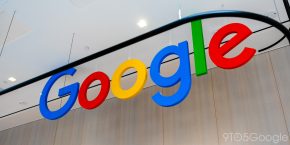During the Q&A of a recent interview, AT&T’s CEO Randall Stephenson said some interesting things about the Android ecosystem.
[youtube=http://www.youtube.com/watch?feature=player_embedded&v=Q3drI4yyiVw&start=2675]
His statements are confusing, because we have been— up to this point—lead to believe that there is a straightforward way this works:
- Google open sources the Android OS.
- After that, manufacturers get the OS working on their devices with drivers and (gawdforsaken) overlays.
- Finally, the carriers certify the OS on those devices (and add a bunch of crapware).
In a response to the questioner, Stephenson blamed Google, saying, “Google determines what platform gets the newest releases and when. A lot of times, that’s a negotiated arrangement and that’s something we work at hard. We know that’s important to our customers. That’s kind of an ambiguous answer because I can’t give you a direct answer in this setting.”
He then goes on to explain how great Windows is and how he has been using it for a month. He also said Android needs to work on security.
While the questioner is speaking in the broader sense about getting his older Android device updated, it is possible that he is referring to the recent Galaxy Nexus that hit Verizon first in December. The GSM version of the Galaxy Nexus was available on AT&T before the release on Verizon (I was an early user) if you bought the phone without a plan.
AT&T and T-Mobile users can now buy a Galaxy Nexus for $399 off plan, but neither company will subsidize the device. This is likely due to Google Wallet, which operates outside of the Carrier ISIS NFC wallet alliance.
Update: a Google spokesperson didn’t understand AT&T CEO’s words and issued this statement:
“Mr. Stephenson’s carefully worded quote caught our attention and frankly we don’t understand what he is referring to. Google does not have any agreements in place that require a negotiation before a handset launches. Google has always made the latest release of Android available as open source at source.android.com as soon as the first device based on it has launched. This way, we know the software runs error-free on hardware that has been accepted and approved by manufacturers, operators and regulatory agencies such as the FCC. We then release it to the world.”
Related articles
- AT&T CEO: iMessage disrupts our messaging revenue stream, unlimited data was a mistake (9to5mac.com)
- 2007′s pre-M3 version of Android; the Google Sooner (9to5google.com)
- Google is selling the Nexus again. Offers unlocked Galaxy Nexus for $399 on Google Play (9to5google.com)
- Ice Cream Sandwich doubles to 5% of all Android devices (9to5google.com)

FTC: We use income earning auto affiliate links. More.


Comments